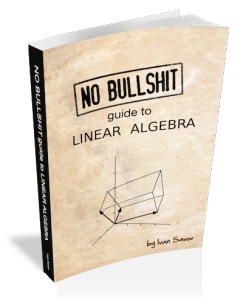If I’ve learned anything about the startup world, it is that you have to listen to your customers, which in my case are the readers of the No Bullshit Guide textbooks. With this principle in mind, I sent out a survey to readers interested in the upcoming statistics requesting feedback on the general direction for the book, based on the stats curriculum and book proposal blog posts, the concept map, and the detailed book outline.
I’ll summarize the results of the survey below (140+ respondents) and comment on some of the readers’ suggestions and advice. The survey is still open in case you want to add your feedback, or feel free to send me an email directly. My email is ivan at this domain.
